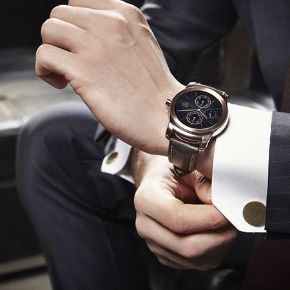Understanding Slot Machine Types
Slot machines come in multiple formats, each offering a distinct experience. Classic three-reel models are simple, with limited paylines and a nostalgic feel that appeals to players seeking straightforward gameplay. Video slots expand on this with immersive themes, detailed graphics, and multiple paylines that can exceed the dozens. Progressive slots introduce a jackpot pool that grows with each spin across connected machines, though the odds of hitting these prizes remain very low compared to fixed-pay jackpots. If you’re evaluating where to play, consider whether you value simplicity, variety, or high-risk high-reward opportunities.
Evaluating Payback Percentage and Volatility
Two of the most important factors in assessing any slot machine are return-to-player (RTP) percentage and volatility. RTP indicates the average percentage of wagers the machine returns to players over time. According to the Nevada Gaming Control Board, many land-based slot RTPs range from about eighty-five to ninety-eight percent, depending on the game and venue. Volatility describes the frequency and size of wins — low volatility games pay small amounts more often, while high volatility games pay less frequently but with larger potential prizes. Choosing between them depends on your tolerance for risk and your playing budget.
Design and User Interface Quality
A slot’s design can influence how engaging and accessible it feels. Smooth animations, clear payline indicators, and an uncluttered interface make gameplay intuitive. Machines with excessive pop-up prompts or complex menus can frustrate users, leading some to Respond to Unsatisfactory Services by moving to another terminal or venue altogether. The best machines blend aesthetic appeal with functional clarity, allowing you to focus on strategy and enjoyment rather than wrestling with confusing controls.
Bonus Features and Mechanics
Bonus rounds, free spins, and multipliers can significantly enhance the appeal of a slot machine. However, these features vary widely in both frequency and payout potential. Some games hide bonus triggers deep within rare symbol combinations, while others make them accessible every few spins. A strong evaluation should consider whether bonus mechanics genuinely improve player value or simply add flashy distractions without substantial rewards.
Sound and Sensory Impact
The sound design of slot machines is no accident — game developers often use auditory cues to encourage continued play. Melodic jingles, celebratory tones after small wins, and ambient casino noise can create a sense of momentum. While this can heighten excitement, it’s worth questioning whether the sensory stimulation aligns with your preferred play style. Overly aggressive sound effects may fatigue some players, while others may find them integral to the experience.
Machine Accessibility and Comfort
Physical layout matters in a review. Comfortable seating, appropriate screen height, and responsive touch or button controls all contribute to a better session. Poor ergonomics can shorten playing time and diminish overall enjoyment. This factor is especially important in venues where players might spend extended periods at the same machine.
Security and Fair Play Considerations
Reliable casinos operate machines certified by independent testing labs to ensure fair play. Organizations such as the fightcybercrime initiative remind players to verify that a venue adheres to industry security protocols. Unlicensed or poorly maintained machines pose both fairness and data security risks, especially in regions with less stringent gambling regulations.
Venue Policies and Player Support
Even the best slot machine can become a negative experience if the venue fails to address technical issues pr
Slot machines come in multiple formats, each offering a distinct experience. Classic three-reel models are simple, with limited paylines and a nostalgic feel that appeals to players seeking straightforward gameplay. Video slots expand on this with immersive themes, detailed graphics, and multiple paylines that can exceed the dozens. Progressive slots introduce a jackpot pool that grows with each spin across connected machines, though the odds of hitting these prizes remain very low compared to fixed-pay jackpots. If you’re evaluating where to play, consider whether you value simplicity, variety, or high-risk high-reward opportunities.
Evaluating Payback Percentage and Volatility
Two of the most important factors in assessing any slot machine are return-to-player (RTP) percentage and volatility. RTP indicates the average percentage of wagers the machine returns to players over time. According to the Nevada Gaming Control Board, many land-based slot RTPs range from about eighty-five to ninety-eight percent, depending on the game and venue. Volatility describes the frequency and size of wins — low volatility games pay small amounts more often, while high volatility games pay less frequently but with larger potential prizes. Choosing between them depends on your tolerance for risk and your playing budget.
Design and User Interface Quality
A slot’s design can influence how engaging and accessible it feels. Smooth animations, clear payline indicators, and an uncluttered interface make gameplay intuitive. Machines with excessive pop-up prompts or complex menus can frustrate users, leading some to Respond to Unsatisfactory Services by moving to another terminal or venue altogether. The best machines blend aesthetic appeal with functional clarity, allowing you to focus on strategy and enjoyment rather than wrestling with confusing controls.
Bonus Features and Mechanics
Bonus rounds, free spins, and multipliers can significantly enhance the appeal of a slot machine. However, these features vary widely in both frequency and payout potential. Some games hide bonus triggers deep within rare symbol combinations, while others make them accessible every few spins. A strong evaluation should consider whether bonus mechanics genuinely improve player value or simply add flashy distractions without substantial rewards.
Sound and Sensory Impact
The sound design of slot machines is no accident — game developers often use auditory cues to encourage continued play. Melodic jingles, celebratory tones after small wins, and ambient casino noise can create a sense of momentum. While this can heighten excitement, it’s worth questioning whether the sensory stimulation aligns with your preferred play style. Overly aggressive sound effects may fatigue some players, while others may find them integral to the experience.
Machine Accessibility and Comfort
Physical layout matters in a review. Comfortable seating, appropriate screen height, and responsive touch or button controls all contribute to a better session. Poor ergonomics can shorten playing time and diminish overall enjoyment. This factor is especially important in venues where players might spend extended periods at the same machine.
Security and Fair Play Considerations
Reliable casinos operate machines certified by independent testing labs to ensure fair play. Organizations such as the fightcybercrime initiative remind players to verify that a venue adheres to industry security protocols. Unlicensed or poorly maintained machines pose both fairness and data security risks, especially in regions with less stringent gambling regulations.
Venue Policies and Player Support
Even the best slot machine can become a negative experience if the venue fails to address technical issues pr
0


































